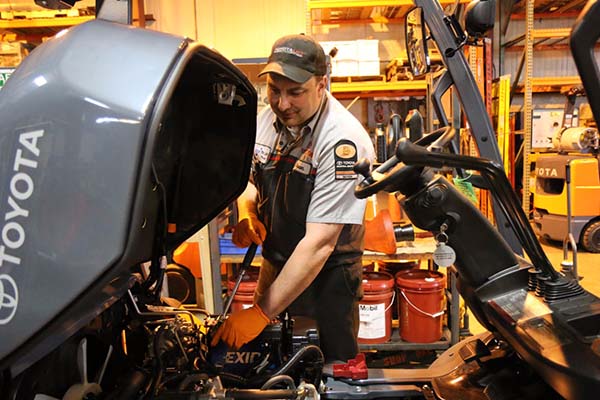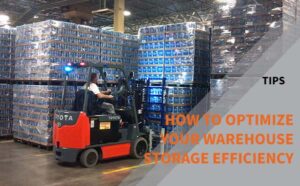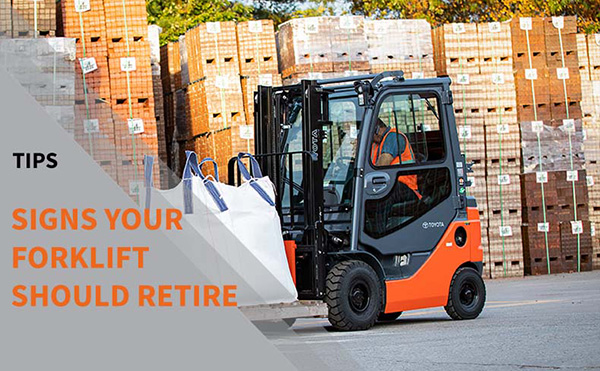The largest component in an electric forklift is the battery. Keeping this single component in top condition is the number one way to keep the forklift going for years. The biggest threat to the battery, specifically for lead-acid batteries, is Sulfation. During regular operation, lead sulfate crystals develop on the plates inside the battery. This crystal build up is what drains the battery of power as time goes on. However, the act of recharging reverses the process, breaking the crystals back down for use by the battery. If a recharge isn’t done promptly, it gives the crystals time to solidify, preventing them from breaking down easily. The more build up, the less available power each cycle, and the sooner the need to purchase a battery. Other “worst practices” that can shorten a forklift battery life include using the wrong amp hour rated charger, undercharging, and failing to replenish the water levels.
Toyota Forklifts feature AC motors which means fewer moving parts and less wear, but external forces can still cause wear and tear, especially to the various cables and connections. A loose plug may provide inconsistent performance at best and catastrophic equipment failure at worst. Frayed or exposed wires due to friction can present a danger not only to the forklift but to the operator as well. Performing a thorough inspection of these connections should be a part of any pre-operation inspection. Make sure plugs are seated properly in their receptacles and visually inspect cables near “pinch points” to ensure they haven’t been damaged. No engine means no oil to worry about, right? Wrong. An electric forklift still uses the same hydraulic system to provide lifting power to the mast. The same is true of the brakes. Both systems should be regularly checked for leaks, quality, and levels on a routine basis.
By keeping an eye on these key areas, it’s possible to significantly reduce the downtime and financial costs associated with maintaining an electric fleet. Just know that when the time comes for preventive maintenance or repairs, Toyota Lift Northwest offers full forklift service and battery maintenance services. If you’d like to learn more about our Toyota 360 Service or T-PlusTM Battery Service, contact us via online form or call us at one of the phone numbers listed above.


